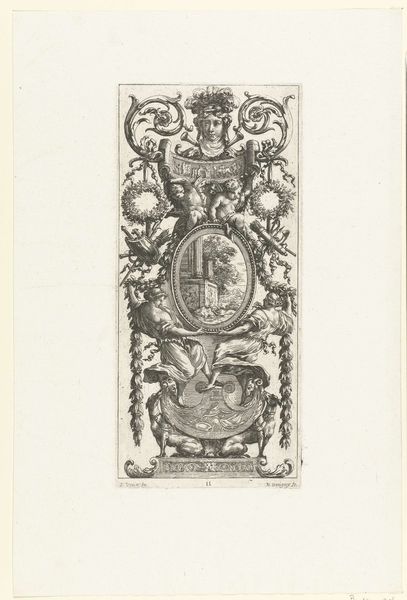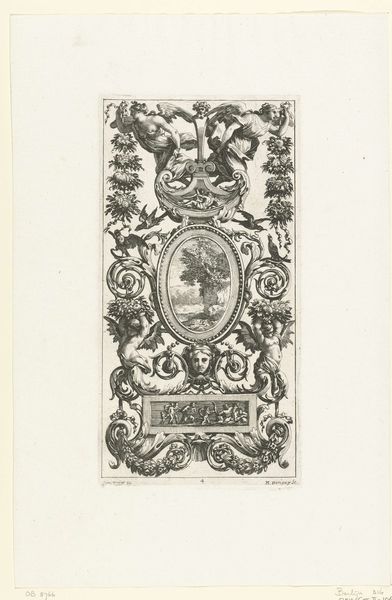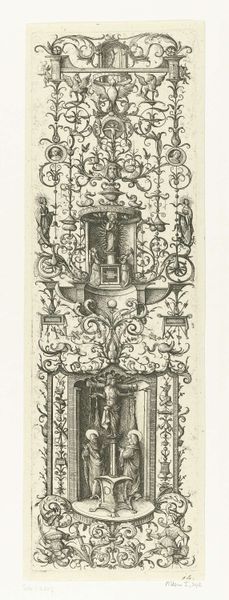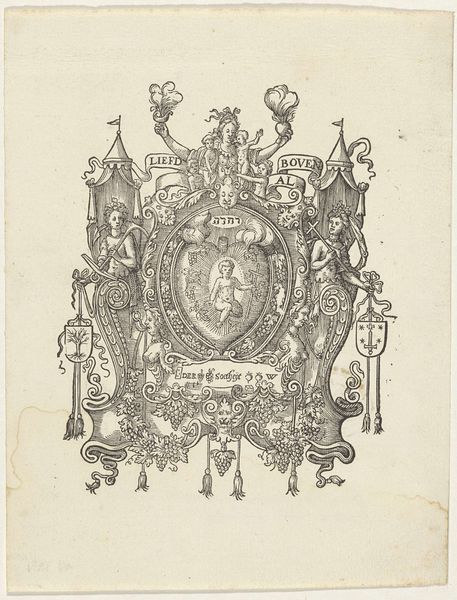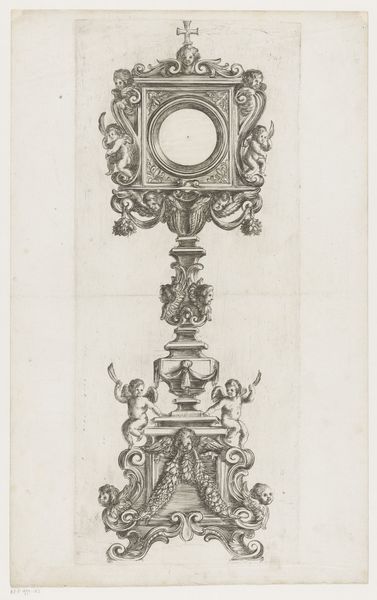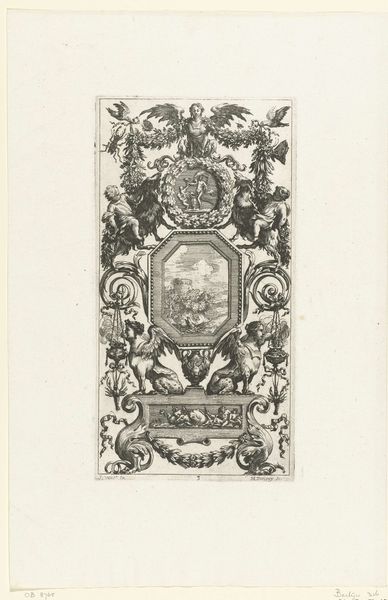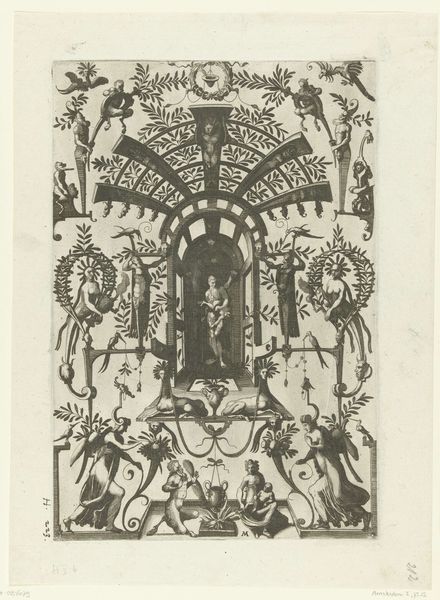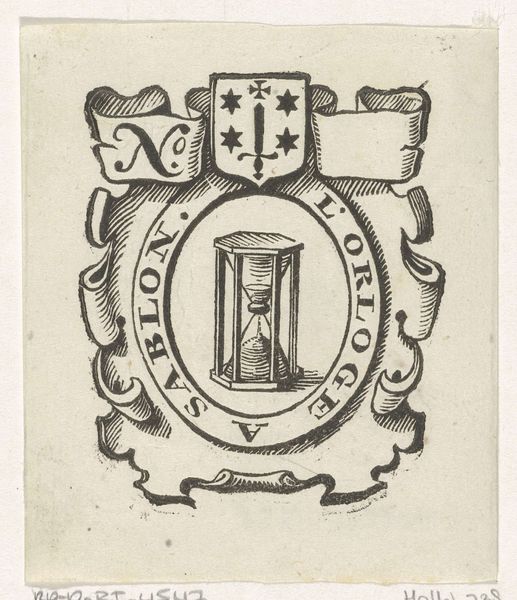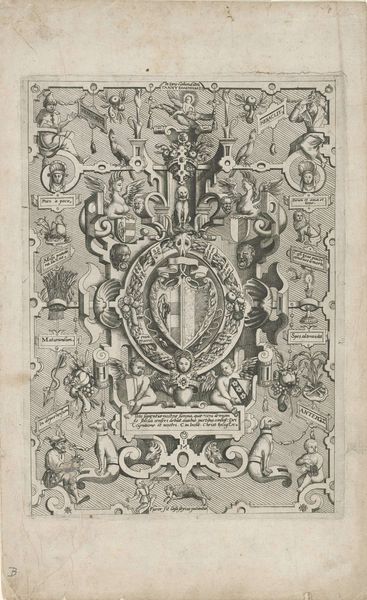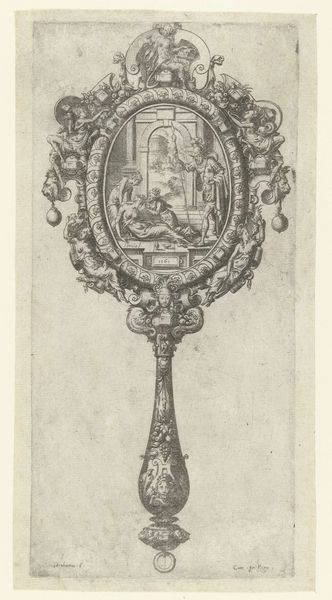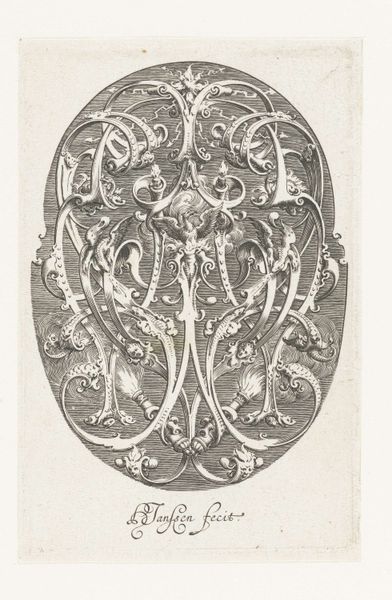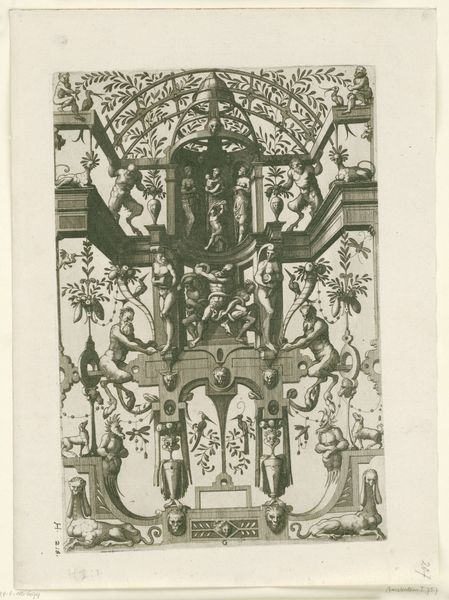
print, engraving
#
baroque
# print
#
old engraving style
#
figuration
#
line
#
history-painting
#
engraving
Dimensions: height 246 mm, width 122 mm
Copyright: Rijks Museum: Open Domain
Editor: Here we have a panel print entitled "Muurpaneel met twee staande vrouwen onder ovale lijst," dating back to the 17th century and attributed to Simon Vouet. It's an engraving, currently housed at the Rijksmuseum. I'm struck by its elaborate ornamentation, but also by how static and formal the female figures appear. What do you see in this piece? Curator: Beyond the Baroque opulence, I see a representation of power and idealization, reflective of its historical moment. Consider the context: prints like these were disseminated widely, shaping perceptions of beauty and authority. These weren't neutral images; they reinforced a specific, elite worldview. The women, though seemingly "static", are embodiments of allegorical ideals, constructed and consumed within a patriarchal society. How do you think the format of printmaking influences this reading? Editor: That's interesting. The fact that it’s a print means it could be mass-produced and distributed. So, these ideals were not just for the elite, but for a wider audience, reinforcing those power structures? Curator: Exactly! And we need to critically examine those "ideals." Are they truly universal, or do they serve specific class and gender interests? Look at the composition – where do your eyes travel? What elements are emphasized? The symbolic language, from the wreaths to the architectural elements, speaks to a highly educated, predominantly male gaze. This gaze, informed by social and cultural norms, affects how we perceive this image today. Editor: I see it. The longer I look, the more staged and constructed the scene appears. The women are almost props in a display of wealth and learning. Curator: Precisely! By recognizing these contextual layers, we move beyond simple aesthetic appreciation and engage with the work’s ideological underpinnings. It is about power, beauty, and representation in seventeenth century Europe. What have you found most revealing in our discussion? Editor: That art is a mirror to the social environment of its time and not merely an object. Curator: And it invites an understanding of contemporary narratives.
Comments
No comments
Be the first to comment and join the conversation on the ultimate creative platform.
